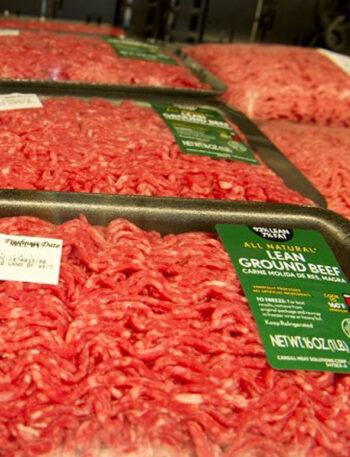If going thru the grocery store aisles and shopping for the biggest sales is engrained in your weekly schedule, you might want to sit down before you keep reading.
After all, how much of a “bargain” are you getting if that discounted pound of hamburger you bought for dinner contains potentially harmful additives? Saving money is important — but so is your family’s health.
That’s why we’ve taken a closer look at some supermarket malpractices to give you the information you need to make the best choice for your body and budget. Here are five facts to keep in mind the next time you decide to hit up the meat counter:
Grocery and big chain stores can legally thaw and refreeze meat multiple times.
Every time meat is thawed and refrozen, it affects the cellular structure, which can compromise flavor and texture when ultimately cooked. Legally, grocery stores can thaw and refreeze meat up to 14 times — and there’s no way of knowing how many times the meat you purchase has been through this process. There’s also no way of knowing how long the meat has been frozen since grocery stores often buy in bulk from their suppliers.
“Fresh” beef probably contains carbon monoxide.
While the above fact may cause you to want to only seek out “fresh, never frozen” beef, there could be additional risks involved with this approach. If you’ve ever wondered why grocery store beef maintains that bright red color so well, the answer is unfortunately tied to a common practice of treating the beef with carbon monoxide to slow oxidization. In fact, up to 70 percent of grocery store meat may contain added carbon monoxide — and while ingesting is a much lower risk than inhalation, this statistic is still undeniably unsettling.
Meat expirations dates are fairly arbitrary.
If you’re someone who plans your meals around expiration dates, this may be a hard pill to swallow: in most cases, they’re pretty arbitrary. In fact, at least 30 states don’t regulate date labeling and most grocery store meat departments are left up to their own labeling. This could mean that, as long as the meat “looks” OK, stores can even choose to re-label and push expiration dates back. Yikes.
You never know what you’re getting in ground beef.
Not only can supermarket ground beef contain meat from potentially hundreds of cows, but it usually comes from older, retired cows — so the meat isn’t nearly as tender marbled. Unless you ask for the meat to be ground fresh at the grocery store, there’s no way to know what a package of ground beef includes.
The meat may not even be American-grown.
Slaughterhouses and chain stores are under no obligation to let you know where the meat actually comes from. Packing plants located in the United States are allowed to label their meat as a domestic product, when in reality, the animals are imported from foreign countries.
This gives you an even less amount of control. If a meat product reads “Packaged in America”, this does not mean it is American grown beef. This is a problem because other countries do not uphold the same standards for cattle raising that we do here.
So, not only do slaughterhouses and packing plants sell meat which have been compressed and mashed together, but this meat may not even come from the States itself!
When it comes to grocery store meat, it’s important to ask yourself one key question: is it worth it? Behrmann Meats, Times Right’s meat supplier, makes sure that all of their beef and pork come directly from the source – i.e. independent farmers and suppliers – to ensure that the meat you’re getting is of the highest pedigree (no factories involved).




